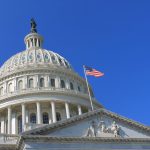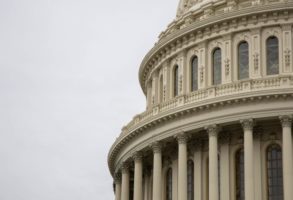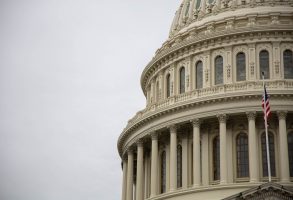Published January 11, 2016
The flurry of budget deals struck by congressional Republicans with President Obama in the final months of 2015 will increase the federal debt by hundreds of billions of dollars in the coming decade. They also make it clear that the true state of U.S. fiscal policy is far worse than shown in official projections — which are based on policies that are not going to survive over the long run.
The deal-making got underway in October, when outgoing House speaker John Boehner negotiated a two-year agreement to increase discretionary spending on defense and non-defense accounts. The deal calls for an increase of $50 billion in appropriated spending in 2016 and $30 billion in 2017 over the levels that had been agreed to by the speaker and president when they last came to an agreement, in 2011. At that time, they had wanted to strike a long-term deal on taxes and entitlements, but when that proved impossible, they chose the path of least resistance and imposed caps on discretionary appropriations without specifying where the cuts would come from.
Predictably, those caps have proven to be impossible to meet politically. Some House conservatives were outraged that Boehner, on his way out the door, would cut a deal with the president to undo the caps he had agreed to in 2011, but those caps were pushing defense spending down to unsustainably low levels. In 2015, defense spending was 3.3 percent of GDP, well below the average of 4.0 percent since 1990, even as the military is facing a staggering series of national-security threats.
There was little prospect of sustaining the low cap on domestic appropriations either. For all of the enthusiasm for downsizing government among conservatives, there have been precious few tangible ideas for real, permanent spending cuts emanating from Republicans on Capitol Hill. Instead, there has been a general retreat to support of across-the-board cuts on domestic appropriations that hit every agency and program equally. This makes little sense, as it penalizes programs that work and should be funded just as much as programs that should be discarded.
The reality is that there is very little prospect for deep, permanent cuts among domestic appropriations because most of the spending is for agencies and programs with bipartisan support.
So, despite being criticized by some House conservatives, Boehner’s deal to raise the caps for 2016 and 2017 was really just a reflection of political and budgetary reality. There never was much hope of sustaining spending levels far below the amounts he agreed to.
The main problem with the October deal was that the new spending was not fully offset with other spending cuts. The former speaker was able to secure some changes in Social Security disability insurance that generally move in the right direction, but otherwise the deal was full of gimmicks and back-loaded savings intended to create the illusion of fiscal discipline. Overall, the deal will add about $76 billion to the debt over the coming decade.
Moreover, while the deal provided only two years of discretionary appropriations increases, the reality is that there will be no going back to the previous level of baseline spending. In other words, appropriations spending in 2018 and beyond will need to be adjusted upward too. If that spending is not offset, or is offset with gimmicks and shell games, it will add about $50 billion each year to the deficit, or $500 billion over a decade.
Congressional Republicans followed up the October deal with one in December that filled in the details of the added appropriations spending for 2016 and then also added to the mix a smorgasbord of tax and entitlement spending changes that will increase federal budget deficits by $680 billion over the coming decade.
Most of that increase is due to the permanent extension of tax provisions that were scheduled to expire, such as the R&D tax credit. These provisions have been around for decades, and Congress has never had any intention of letting them lapse. Rather, Congress has passed a long series of temporary extensions of these provisions so that there would always be a reason for taking up another tax bill to extend them, which could then also carry other, more recently discovered priorities. The permanent extension of these types of provisions was long overdue.
But Congress added to these permanent “extenders” a new series of adjustments, most notably the delay of three tax hikes included in the Affordable Care Act. The tax on medical-device manufacturers and the so-called Cadillac tax on high-cost insurance plans were pushed back two years, and the excise tax on health insurers was delayed by one year.
There’s no reason Republican opponents of the ACA should lament the demise of the health industry excise taxes. After all, they were used to finance Obamacare (the “Cadillac” tax is a different story; the GOP would have been better off leaving it in place and replacing it when they get the chance to do so). But there’s no getting around the fiscal consequences of delaying these taxes either, especially if the rest of Obamacare remains in place. And now that these provisions have been delayed once, they will almost certainly be delayed again. If each of these revenue provisions is ultimately repealed, the revenue loss would be about $250 billion over a decade.
This flurry of bipartisan, deficit-increasing legislation comes as the federal government is swimming in red ink. Just eight years ago, in 2008, federal debt stood at 39 percent of GDP. From 1965 through 2008, the average level of federal debt was 35 percent of GDP. Today, federal debt has reached 74 percent of GDP. The government’s fiscal position had already deteriorated in a significant way during the Obama years, and that’s before this latest round of tax cuts and spending increases were enacted and before the bulk of the Baby Boom generation has signed up for Social Security and Medicare benefits.
Last summer, the Congressional Budget Office (CBO) issued long-term budget projections that showed spending on Social Security and the big health entitlement programs (Medicare, Medicaid, and the subsidies paid under the ACA) rising from 10.1 percent of GDP today to 14.2 percent in 2040. But the agency also projected that this large increase in entitlement spending would be partially offset with a rise in federal revenues and a deep cut in defense and domestic appropriations. CBO’s baseline forecast showed revenue rising from 17.7 percent of GDP today to 19.4 percent in 2040, and total discretionary spending falling from 6.5 percent of GDP today to just 5.1 percent in 2040.
The bipartisan deals struck in 2015 make it abundantly clear that both the revenue and discretionary spending estimates from this forecast are far too optimistic. The United States has not spent less than 6 percent of GDP on discretionary appropriations in any year since 1965, and the average level of spending over the past four decades has been 9 percent of GDP. During that same period, the federal government has collected an average of 17.7 percent of GDP in revenue.
If in 2040 federal revenue comes in at the historical rate, and discretionary spending is held to 7 percent of GDP, the projected deficit in that year would be 9.5 percent of GDP, far above the level that would be sustainable.
The nation’s fiscal problems cannot be solved with tax hikes that will not endure, or with irresponsible cuts to defense spending, or with illusory savings in domestic discretionary programs. The only answer is fundamental entitlement reform. Unfortunately, that’s not the answer President Obama wants to hear, so he has spent his time in office avoiding the subject.
But the clock is ticking. Mounting debt and a widening gap between spending commitments and the amount of money the government can reasonably expect to collect to pay for them will eventually precipitate a fiscal and economic crisis of some sort. It would be far better for the country if political leaders took steps to head off such a crisis before it occurs. That way the policy adjustments can be implemented in a gradual way, with less burden and disruption for voters. Procrastination and problem avoidance will only make the corrective steps more painful and abrupt when, inevitably, they must be imposed.
James C. Capretta is a senior fellow at the Ethics and Public Policy Center and a visiting fellow at the American Enterprise Institute.










